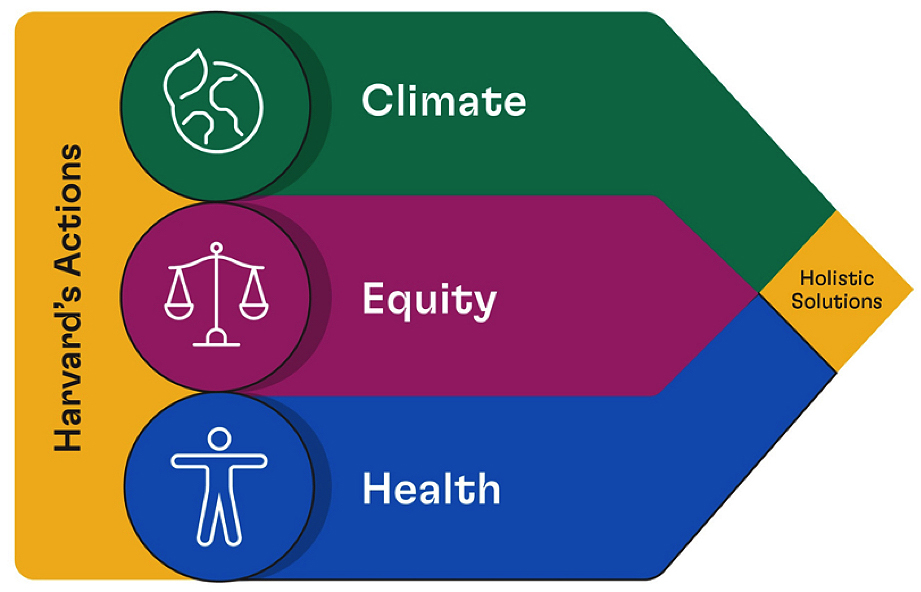On May 11, Harvard released a new sustainability action plan. The report takes a holistic look at the University’s impact on climate, from research and teaching about the problem to modeling best practices for other institutions, whether in food services or building materials selection and construction. Its aim is to integrate “climate and the environment, societal equity, and the health and wellbeing of people into the actions we take and how we measure success.” The principal focus remains on how Harvard powers, builds, and operates its physical plant. Heating, cooling, and powering buildings account for 97 percent of the University’s direct greenhouse gas (GHG) emissions and those attributable to purchased electricity (scope 1 and 2 emissions; see illustration above).
During the decade ending in 2016, the University achieved a 30 percent reduction in GHG emissions. Since then, it has held those emissions steady despite continued growth in the physical plant and intensification of use driven in significant part by new laboratories. Maintaining a flat emissions trajectory has been achieved to some extent through renewable energy purchases. But because more than half the University’s electricity is purchased, further reductions may depend to a large degree on the greening of its suppliers.
A Presidential Committee on Sustainability was created in December 2019, and the group (which includes Office for Sustainability managing director Heather Henriksen) is responsible for evaluating how Harvard will achieve its future goals: to become fossil fuel neutral by 2026, (through the purchase of renewable electricity and other off-campus emissions reductions projects that zero out both GHGs and other byproducts of fossil fuel combustion harmful to human health, such as nitrous oxides and sulfur dioxide); and to become fossil fuel free by 2050.
The University has undertaken an analogous extension of health concerns and other impacts in its approach to construction, by seeking to reduce the use of materials that could harm the environment or human health at any point in their lifecycle. And it has set a new goal to complete the transition of Harvard’s shuttle bus fleet to fully electric by 2035 (currently, a third of its fleet is electric).

Harvard has also begun to examine its broader impacts on GHG emissions through the goods and services it purchases (including food), through employee business travel and commuting, and through its purchases of capital goods (collectively referred to as “scope three emissions”). Heinz professor of environmental management Michael Toffel, a co-chair of the Presidential Committee on Sustainability, said the new plan is more holistic in several ways: it “looks beyond the campus footprint;” considers impacts beyond climate, such as equity, since fossil fuels have negative impacts on health at the locations where they are combusted; considers how Harvard’s actions can help others make similar moves, such as converting to electric buses; and redoubles experimental efforts at reducing climate impacts. For example, at the previous day’s climate symposium sponsored by the Salata Institute, all the prebooked hotels were within walking distance of the conference, and the lunches were plant-based (thus contributing to fewer emissions)—a small experiment in reducing overall impacts. Emissions data for 2022 was not included in the plan released today. That information is expected to be made available later this year.









